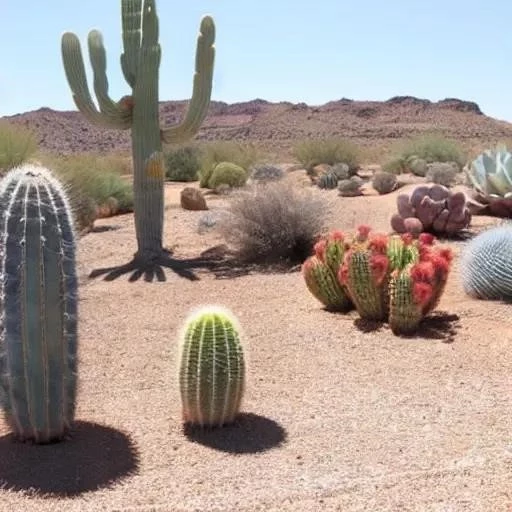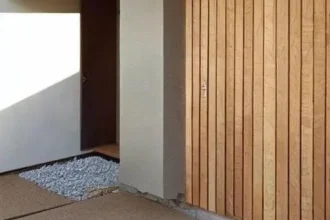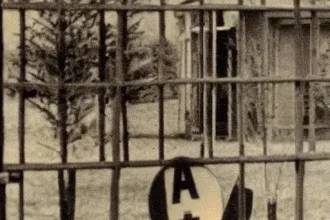The desert, often perceived as a desolate expanse of sand and rock, holds a surprising secret: it is a canvas waiting for life to flourish. Far from being an insurmountable challenge, cultivating a vibrant garden in arid lands is an incredibly rewarding endeavor, transforming stark landscapes into verdant havens. With ingenious strategies and a deep understanding of ecological principles, gardeners across the globe are proving that the desert can not only sustain beauty but also thrive with remarkable resilience. This isn’t just about survival; it’s about crafting breathtaking oases that defy expectations, showcasing the profound power of nature when nurtured with foresight and innovation.
Embracing the unique demands of an arid environment requires a shift in perspective, moving beyond conventional gardening wisdom to adopt practices specifically tailored for scarcity. It’s a journey of discovery, where every drop of water is cherished, and every plant chosen is a testament to natural adaptability. From the scorching sun to the often-depleted soil, these conditions, once seen as formidable obstacles, become catalysts for creativity and sustainable solutions. By integrating insights from ancient indigenous wisdom with cutting-edge horticultural science, modern desert gardening is charting a new, optimistic course, promising a future where green spaces are not just possible but truly sustainable, even in the most challenging climates.
Essential Desert Gardening Principles
| Principle | Description | Key Benefit |
|---|---|---|
| Xeriscaping | Landscaping with water conservation as a primary objective. Involves selecting drought-tolerant plants, efficient irrigation, and mulching. | Significantly reduces water consumption and maintenance. |
| Native Plant Selection | Prioritizing plants indigenous to arid regions. These species are naturally adapted to local climate and soil conditions. | Requires minimal water, fertilizer, and pest control, enhancing local biodiversity. |
| Efficient Irrigation | Utilizing drip systems, soaker hoses, and smart irrigation controllers to deliver water directly to plant roots, minimizing evaporation. | Optimizes water use, preventing waste and ensuring plants receive adequate moisture. |
| Soil Improvement & Mulching | Amending sandy desert soils with organic matter to improve water retention and nutrient content. Applying mulch to reduce evaporation and regulate soil temperature. | Creates a healthier root environment and conserves soil moisture more effectively. |
| Microclimate Utilization | Identifying and leveraging small, localized variations in temperature, sunlight, and wind within a garden space to benefit specific plants. | Allows for a greater diversity of plants and provides natural protection from harsh elements. |
For more in-depth information, visit Desert Gardeners’ Alliance.
Unleash the Oasis! Revolutionary Desert Gardening Tips That Will Transform Your Arid Landscape
The cornerstone of successful desert gardening lies in a profound respect for water, a resource so precious in arid zones. Implementing incredibly effective drip irrigation systems, for example, can reduce water usage by up to 80% compared to traditional sprinklers. These systems deliver water directly to the plant’s root zone, minimizing evaporation and ensuring that every drop counts. Furthermore, embracing greywater recycling – treating and reusing water from sinks and showers for irrigation – represents a forward-looking strategy, converting household waste into a vital resource. Pioneering communities, from Arizona to the Negev, are already demonstrating the tangible benefits, cultivating lush landscapes with remarkably minimal reliance on potable water sources.
Beyond water, the very ground beneath our feet demands innovative attention. Desert soils are often sandy and nutrient-poor, struggling to retain moisture. However, by enriching these soils with generous amounts of organic matter—compost derived from kitchen scraps and yard waste, alongside meticulously chosen amendments—gardeners can dramatically improve their water-holding capacity and fertility. This transformative process, often bolstered by the strategic application of thick mulch layers, creates a hospitable environment for roots, regulating soil temperature and suppressing competing weeds. Consider the thriving succulent gardens of the Desert Botanical Garden in Phoenix, where meticulously amended soils allow an astonishing variety of arid-adapted flora to flourish, captivating visitors with their vibrant displays.
Choosing the right plants, of course, is paramount. Native species, having evolved over millennia in harsh conditions, are remarkably resilient and require significantly less intervention. Agaves, cacti, palo verde trees, and various salvias not only survive but truly thrive, contributing to the local ecosystem and providing crucial habitat for wildlife. Diversifying your plant palette with carefully selected drought-tolerant ornamentals also adds layers of visual interest and seasonal beauty, defying the stereotype of a monotone desert. Expert horticulturists, continually researching and identifying new species, advocate for zoning plants with similar water needs together, a remarkably simple yet profoundly effective method for optimizing irrigation schedules and minimizing waste.
Moreover, savvy desert gardeners are masters of microclimates. Every home, every wall, every existing tree creates subtle variations in sunlight, wind exposure, and temperature. Strategically placing shade structures or taller, established plants can shield more sensitive species from the most intense midday sun, while carefully designed rockeries can capture and radiate heat, extending warmth during cooler desert nights. These localized environmental modifications, often overlooked, are pivotal in creating pockets of ideal growing conditions, allowing for a broader spectrum of plants to prosper. It’s akin to an architect designing a building to maximize natural light and minimize energy consumption; a gardener sculpts the landscape to harness nature’s nuances.
The journey into desert gardening is not merely about planting seeds; it’s a testament to human ingenuity and our profound connection to the natural world. It’s an optimistic vision, proving that with thoughtful planning, sustainable practices, and an unwavering commitment to ecological harmony, we can transform even the most challenging environments into breathtaking sanctuaries; As we look forward, the principles honed in arid landscapes offer invaluable lessons for sustainable living everywhere, illustrating that resilience, beauty, and abundance can indeed flourish, even in the most unexpected places. Embrace these revolutionary desert gardening tips, and witness your arid patch evolve into a vibrant, life-affirming oasis, a testament to what is truly possible.






